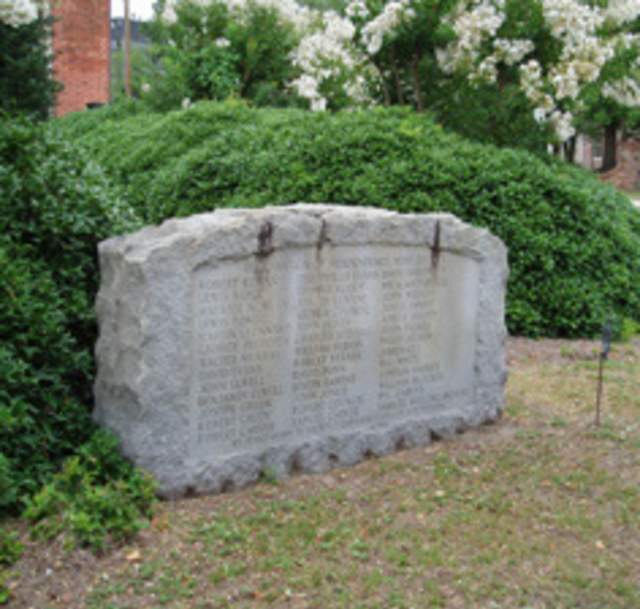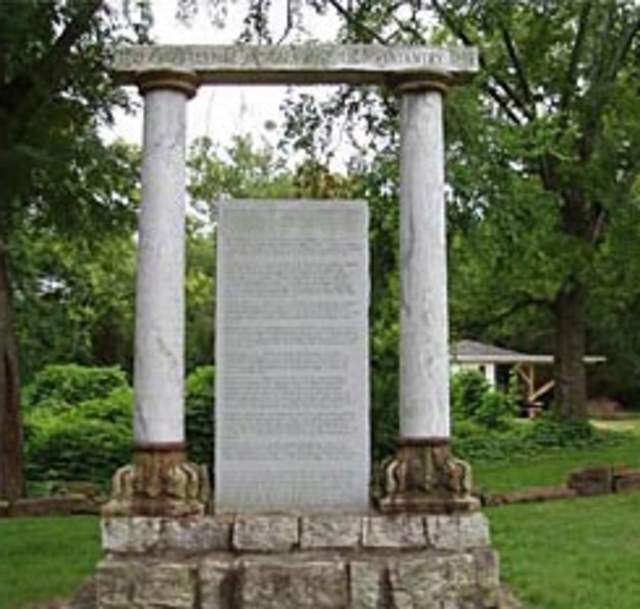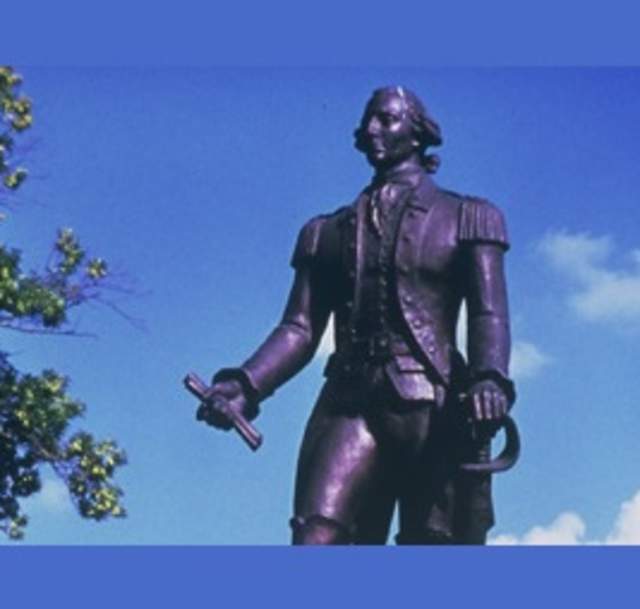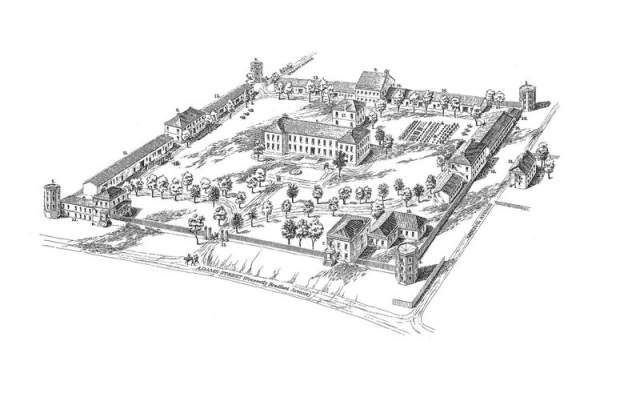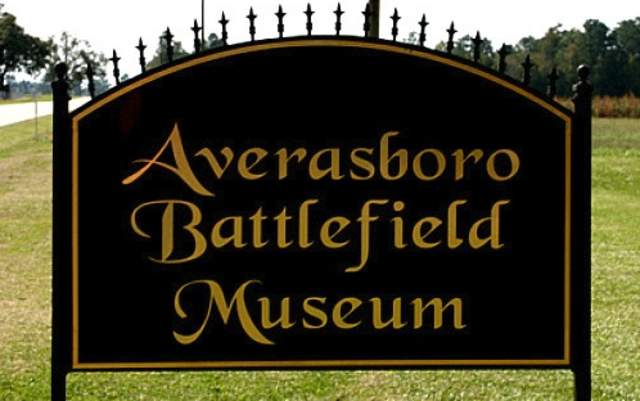Fayetteville and Cumberland County offer history buffs, and especially military history buffs, plenty of sites to explore. While many are familiar with the modern military history associated with the Fayetteville region, (thanks to Fort Liberty,) its less widely known that the region's military history dates back to the Revolutionary War era. We've outlined a few key sites in this blog, and invite you to explore our rich history further through our Heritage Trails and other Historical resources.
Liberty Point Resolves
Two hundred and fifty years ago, on June 20, 1775, a gathering of locals signed a document that is commonly called "The Liberty Point Resolves," which was a precursor to the Declaration of Independence. The 55 dignitaries who signed the document pledged to "go forth and be ready to sacrifice our lives and fortunes to secure her freedom and safety." The document is said to have been tacked to the Liberty Tree, which stands in front of the U.S. Army Airborne & Special Operations Museum on Hay Street. The original document, currently preserved in the Southern Historical Collection at the University of Chapel Hill, is periodically on display in Fayetteville.
The moment is memorialized on a granite sculpture at Liberty Point in downtown Fayetteville. Liberty Point is a vestige of early street patterns with its triangular plot.
Fayetteville Independent Light Infantry Parade Grounds
Liberty Point
At or near this site on June 20, 1775, a group of 55 patriots signed an early…
Fayetteville Independent Light Infantry Parade Grounds
The Fayetteville Independent Light Infantry was organized here in 1793. The monument…
Marquis de Lafayette Statue
A statue in Cross Creek Park honors Fayetteville's namesake.
LaFayette Visits Fayetteville
From March 4-5 1825, Fayetteville welcomed its namesake, the Revolutionary War hero, the Marquis de Lafayette, during his Grand Tour of the United States. In his welcome speech, Judge Toomer proclaimed, “Never, never can we forget the youthful stranger who, in the darkest hour of adversity, so generously flew to our succor and so gallantly fought the battle of freedom.” Fayetteville had been named for Lafayette by the North Carolina General Assembly in 1783. Fayetteville was the only namesake city Lafayette visited. The Lafayette trail showcases the sites that Lafayette visited on his tour of the Fayetteville community.
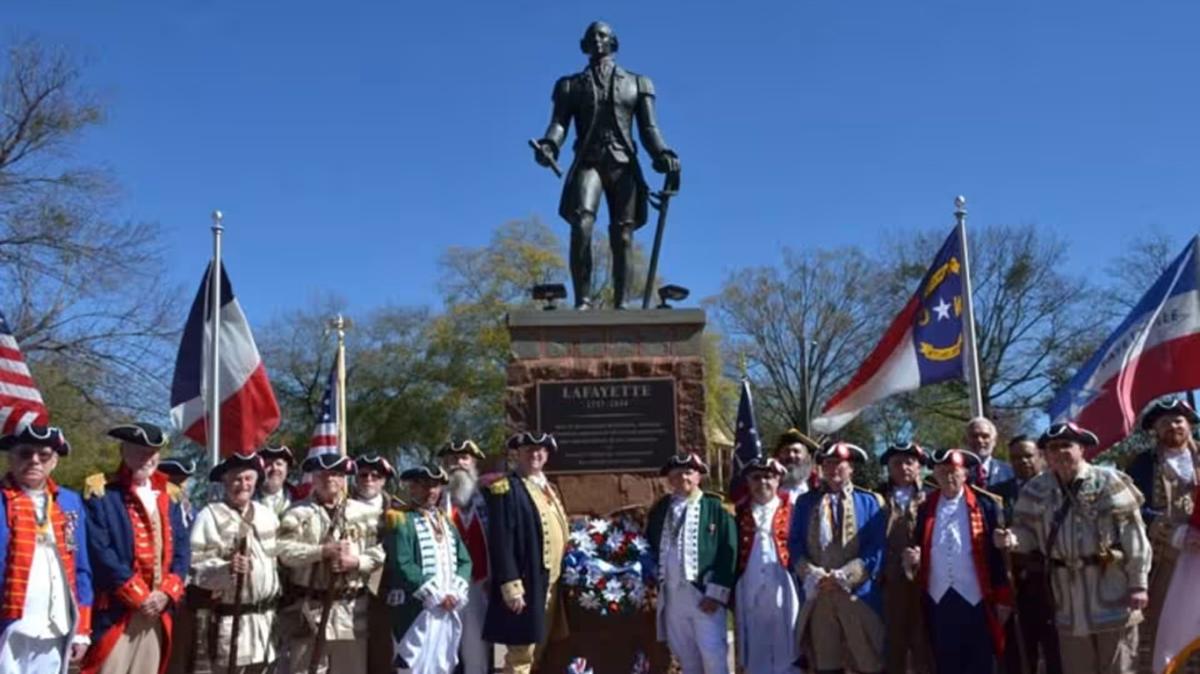
Fayetteville Arsenal
In 1838, the cornerstone of the U.S. Arsenal in Fayetteville was laid. Congress had chosen Fayetteville due to its geographic location. When North Carolina seceded from the Union, local militia units took the arsenal without any resistance. The arsenal produced rifles, gun carriages, and ammunition for the Confederacy. In March 1865, Gen. William T. Sherman entered North Carolina with an army of 60,000 strong. On March 11, Sherman established his headquarters at the arsenal. On March 13, the arsenal was laid to ruins. Today, the remains of the arsenal are one component of the Museum of the Cape Fear Museum Historical Complex.
Averasboro Battlefield and Museum
It was at Averasboro the Confederates Relive the Civil War Battle of Averasboro (March 15-16, 1865) as you visit the Battlefield museum, battle grounds, and Confederate cemetery. Also learn about the Smiths, the family that owned the 8,000-acre plantation where the battle was fought.
The Fayetteville Arsenal
The original arsenal housed numerous brick and stone structures and octagonal corner guard towers. Arms-making machinery from the U.S. Arsenal at Harper's Ferry Virginia was installed in October 1861, and the arsenal became a major supplier…
Averasboro Battlefield and Museum
Learn about the Confederate Army's final delaying action at Averasboro Battlefield, just north of Fayetteville.

